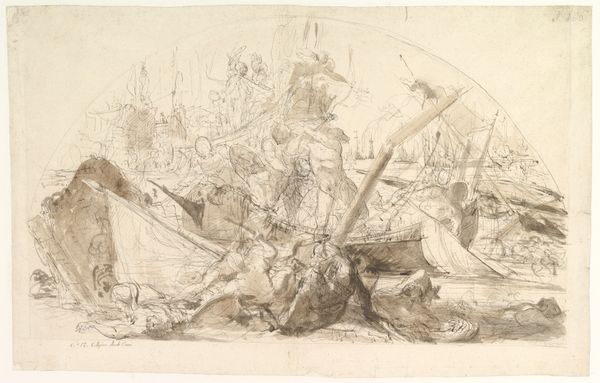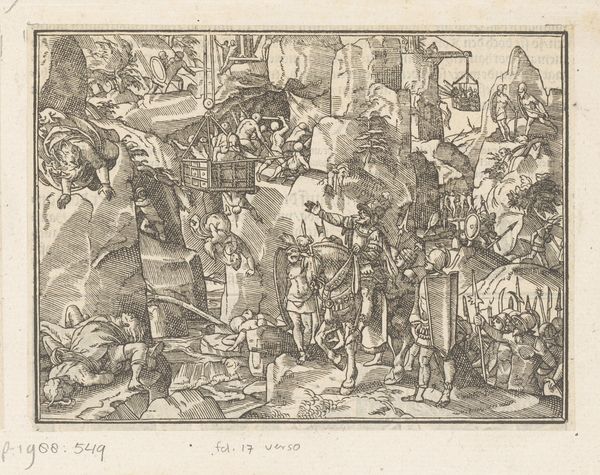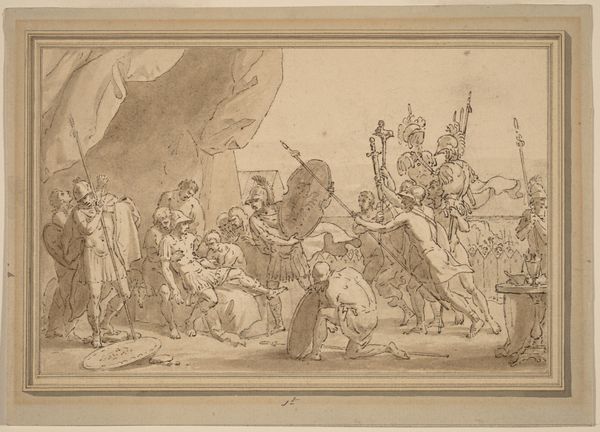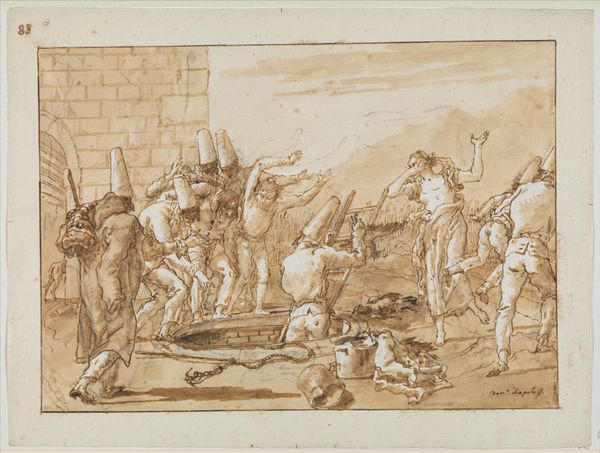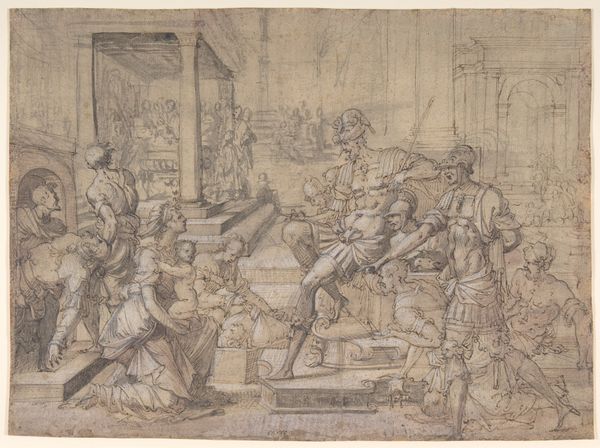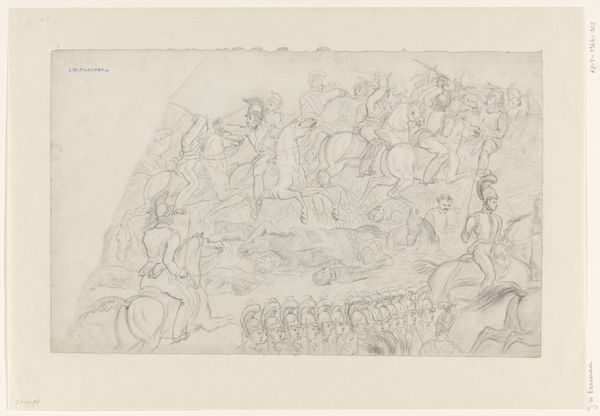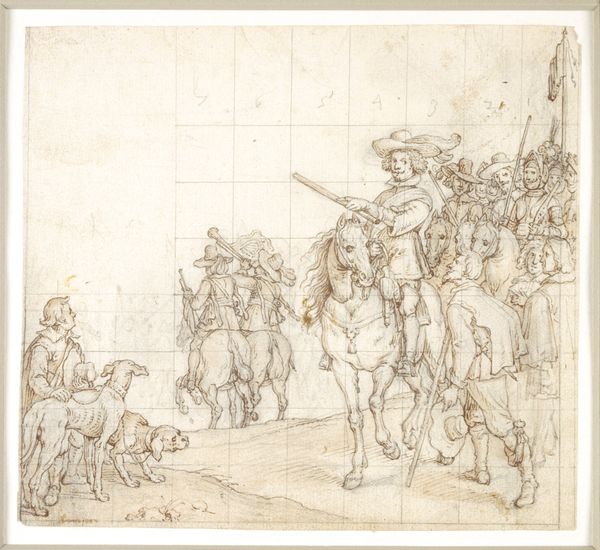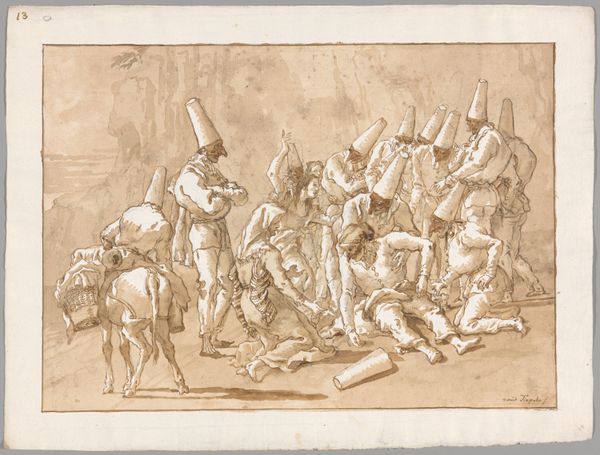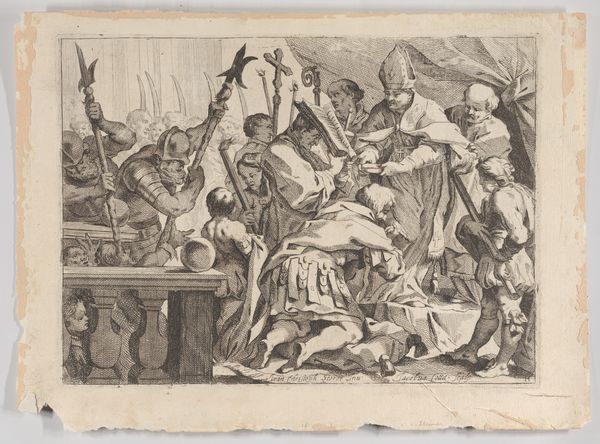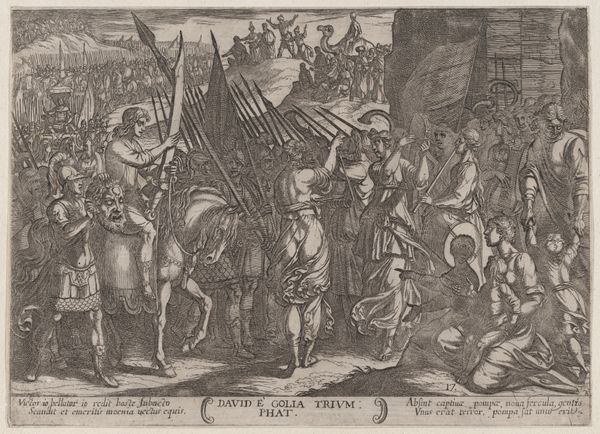
Dimensions: plate: 11 13/16 x 16 in. (30 x 40.7 cm) sheet: 13 1/4 x 18 3/8 in. (33.7 x 46.7 cm)
Copyright: Public Domain
Curator: Here we have James Sayers' "Concerto Coalitionale," dating back to 1785. It’s a wonderfully detailed etching and aquatint print, currently residing here at The Met. Editor: It's fascinating! My initial impression is one of organized chaos – a gathering of figures all engaged with different instruments, but there’s something discordant about it. The lines feel a bit frantic, like the orchestra is severely out of tune! Curator: It is certainly chaotic by design. Sayers created this during a volatile political period. The artwork depicts key political figures of the time as amateur musicians, mocking their attempts to harmonize their disparate agendas into a cohesive governing coalition. Editor: Ah, I see! Knowing that context shifts everything. The emphasis isn't simply on music-making, but the tools, instruments, and labor involved in manufacturing such an out-of-tune racket becomes the true subject of analysis. Look at the variety: we have trumpets, strings, a harp. Who crafted these objects, what materials, and what did this reveal of London's artisan economy? Curator: Exactly. Think of each instrument as representing a different faction, and their varying levels of skill portraying the competency—or lack thereof—within those groups. The etching technique, with its intricate lines and cross-hatching, lends itself perfectly to the satire, exaggerating features and highlighting the absurdity of the political landscape. Editor: And note how ink—an immediate and easily manipulated medium—becomes central to conveying immediacy and dissent through image making during heightened social change? The lines, achieved with relative low skill level requirements, are intentionally harsh! Curator: The deliberate crudeness, even. I’d say this print functions as a visual editorial, commenting on the power struggles and perceived incompetence of the ruling class. The setting itself becomes a stage for enacting political theatre. Editor: It's all about understanding the layers of materiality within these seemingly crude satirical depictions. Who makes art? And why are such critical skills sometimes viewed outside the traditional context of art? Sayers's material choices and compositional skills suggest otherwise, creating the ideal foundation to view political history. Curator: Absolutely. It provides a window into understanding both political discourse and artistic expression during that era, all within an intersectional commentary about governance, privilege, and labor practices. Editor: Yes! Thinking about how those political processes mirror artisanal production illuminates overlooked parallels that shape our interpretation! Curator: Looking closely today allows us to understand just how radical artistic traditions allow space to challenge dominant powers of labor! Editor: Exactly. Now, let’s see what other secrets this collection holds.
Comments
No comments
Be the first to comment and join the conversation on the ultimate creative platform.


